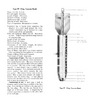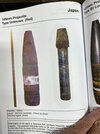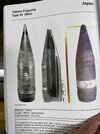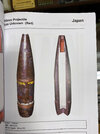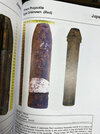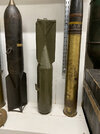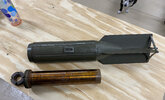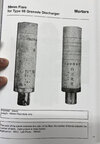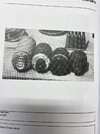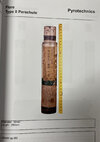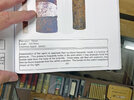Hello folks.
I am currently in the philippines supporting Dredging operations and have come across an item which i require your assistance with please. I believe it to be Japanese, possibly a flare. The shaft is approx. 75-90mm in diameter and approximately 300-500mm in length. I apologies for the vagueness of the measurements but thats whats reported back by the Philippine dredger ship crew. Any assitance will be much appreciated.
BRI
I am currently in the philippines supporting Dredging operations and have come across an item which i require your assistance with please. I believe it to be Japanese, possibly a flare. The shaft is approx. 75-90mm in diameter and approximately 300-500mm in length. I apologies for the vagueness of the measurements but thats whats reported back by the Philippine dredger ship crew. Any assitance will be much appreciated.
BRI
Attachments
-
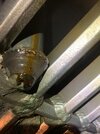 513df3f4-395e-4e6c-919b-db843d8b16cf.JPG211.3 KB · Views: 59
513df3f4-395e-4e6c-919b-db843d8b16cf.JPG211.3 KB · Views: 59 -
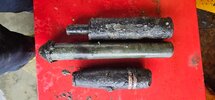 7e260206-3d9f-40f0-9b17-a54b5057a32c.JPG187.2 KB · Views: 54
7e260206-3d9f-40f0-9b17-a54b5057a32c.JPG187.2 KB · Views: 54 -
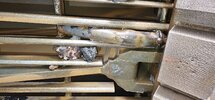 538fefab-8f38-4dcb-bb4f-b49a0d3b2006.JPG265.1 KB · Views: 54
538fefab-8f38-4dcb-bb4f-b49a0d3b2006.JPG265.1 KB · Views: 54 -
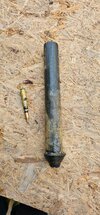 63281d8f-e170-4df7-9ed9-67e705180316.JPG292.8 KB · Views: 50
63281d8f-e170-4df7-9ed9-67e705180316.JPG292.8 KB · Views: 50 -
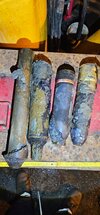 6908b499-9283-470f-bbfb-b8516cf3d90b.JPG215.4 KB · Views: 53
6908b499-9283-470f-bbfb-b8516cf3d90b.JPG215.4 KB · Views: 53 -
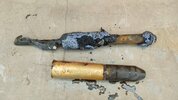 5fa9eafd-4ea7-4d53-855c-1efc99b4d1ee.JPG235.4 KB · Views: 54
5fa9eafd-4ea7-4d53-855c-1efc99b4d1ee.JPG235.4 KB · Views: 54

